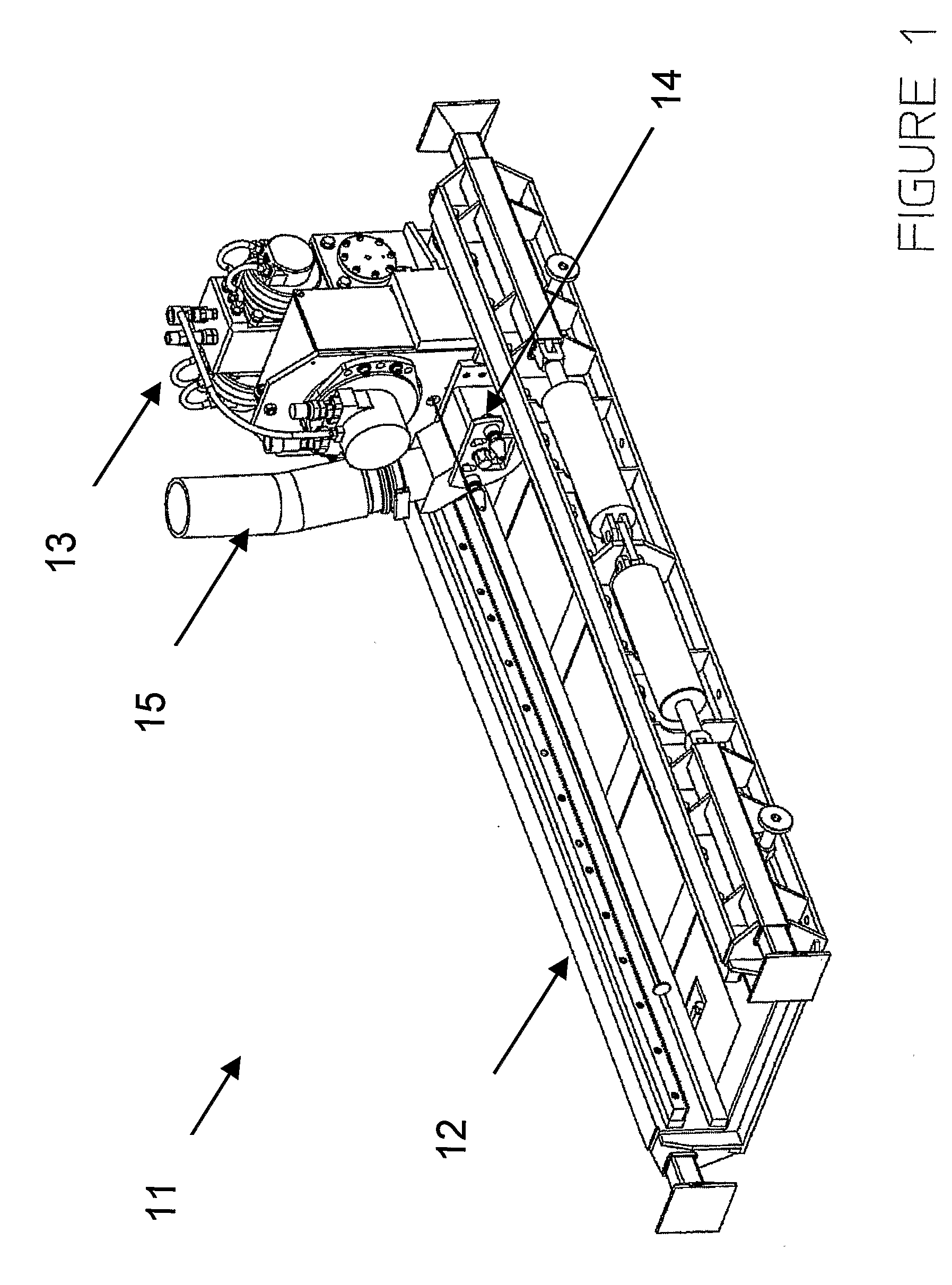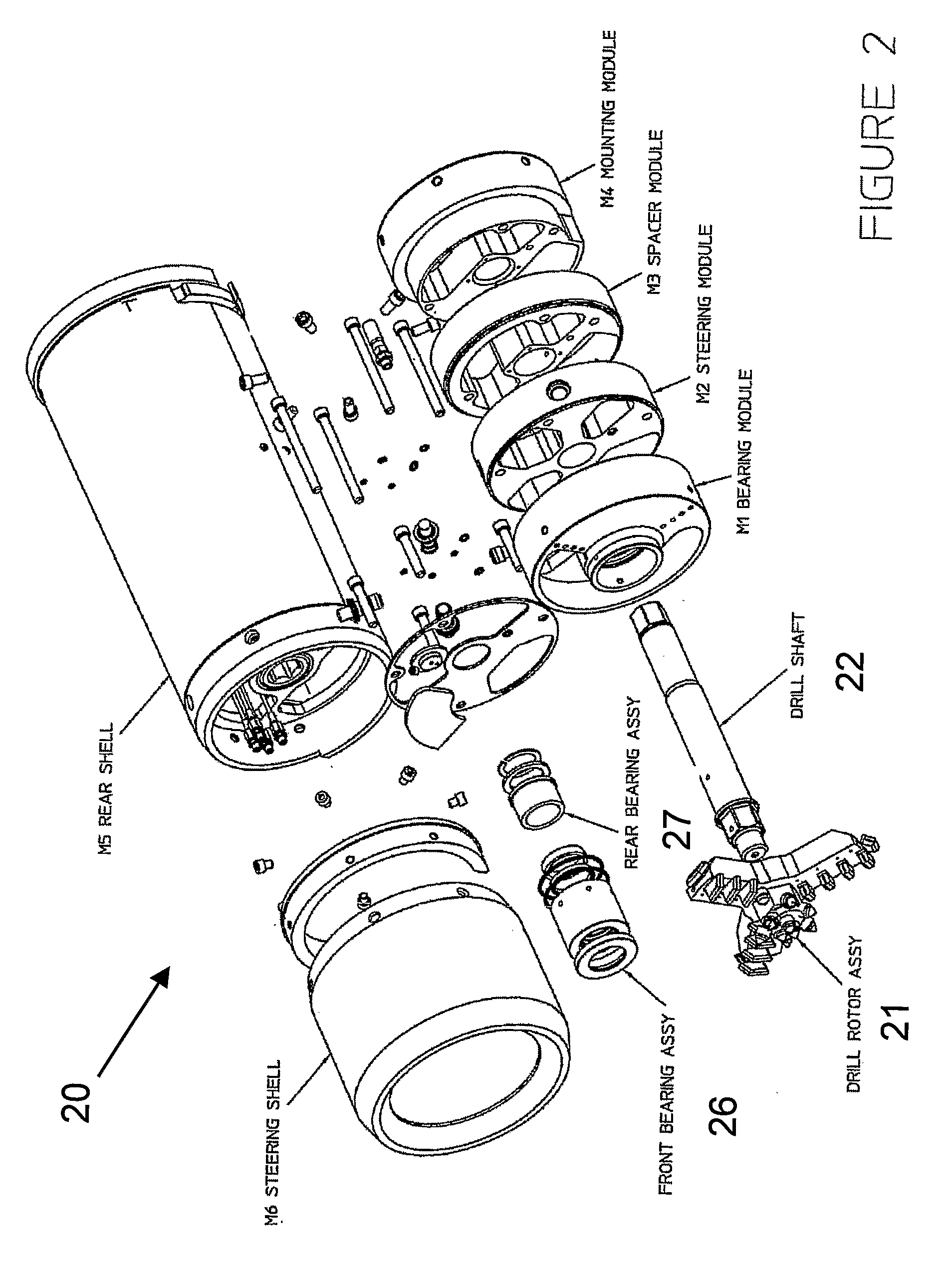Microtunnelling system and apparatus
a technology of microtunnelling and equipment, applied in the field of microtunnelling system and equipment, can solve the problems of large disruption of roadways, high possibility of destruction of existing infrastructure, e.g. previously buried utilities
- Summary
- Abstract
- Description
- Claims
- Application Information
AI Technical Summary
Benefits of technology
Problems solved by technology
Method used
Image
Examples
Embodiment Construction
[0042]Referring to the drawings there is shown a microtunnelling apparatus and system that comprises a drive system (11), a drill head section (20) and intermediate drill rods (41) allowing extension of the boring hole created by the drill head section driven by the drive system.
[0043]The drive system (11) as shown in FIG. 1 includes a power source and a track system for allowing limited linear drive of the power source. The track system includes a rack and pinion gearing system (12) to allow maintained linear thrust pressure along the length of the track. The power source includes a hydraulic thrust module (13), which reciprocates a rotation module (14) housed in the thrust box in the launch shaft. The product pipe can be either pushed or pulled into place for pipeline completion.
[0044]To the front of the rotation module (14) is attached encased intermediate drill rods (41) such as shown in FIGS. 14 and 15.
[0045]Attached to the distal end of the last intermediate drill rod (41) is ...
PUM
 Login to View More
Login to View More Abstract
Description
Claims
Application Information
 Login to View More
Login to View More - R&D
- Intellectual Property
- Life Sciences
- Materials
- Tech Scout
- Unparalleled Data Quality
- Higher Quality Content
- 60% Fewer Hallucinations
Browse by: Latest US Patents, China's latest patents, Technical Efficacy Thesaurus, Application Domain, Technology Topic, Popular Technical Reports.
© 2025 PatSnap. All rights reserved.Legal|Privacy policy|Modern Slavery Act Transparency Statement|Sitemap|About US| Contact US: help@patsnap.com



